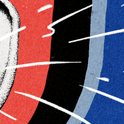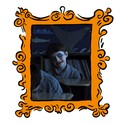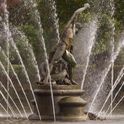This year marks the end of Ernest Hemingway's century-he was born on 21st July 1899 in Illinois-and the end of my 60th year, (more about that later). The concept of the male hero has changed so much in recent decades that it comes as a surprise to learn that Hemingway is still popular. Last year his books were borrowed 55,000 times from libraries in Britain, ranking him with Virginia Woolf, and well ahead of Joseph Conrad or Aldous Huxley. His enduring popularity is not limited to Britain; his publisher reports that world sales "are at an all-time high."
For Whom the Bell Tolls, Hemingway's epic tale of the Spanish civil war, remains one of his bestsellers; even in Spain, where it could not be published for many years because of its republican sympathies. First published in 1941 to great critical and popular acclaim, For Whom the Bell Tolls has long been a favourite of mine. In 1943 the film of the book was released by Paramount, which paid Hemingway the then record sum of $100,000 for the rights. In case you do not know the novel, the action is set in central Spain during the last days of May 1937. Robert Jordan, a university professor from Billings, Montana, turned dynamiter for the republicans, is attached to a band operating behind nationalist (fascist) lines in the Sierra Guadarrama, between Madrid and Segovia. His job is to blow up a bridge to stop the nationalists from outflanking a surprise attack on Segovia planned by the republicans.
Hemingway had a big say in the film's casting: Gary Cooper played Robert Jordan and Ingrid Bergman played Maria, a beautiful Castillian guerrilla. Casting a blonde Swede as a Castillian is not an obvious choice, but Hemingway insisted. Martha Gellhorn had just become his third wife; she was a nordic blonde. So you can guess why.
It's a fine romantic story. Jordan's lovemaking with Maria gave us the phrase "the earth moved" (this was before anyone knew about "having sex"). The bridge is blown, Jordan is injured and stays behind in the pass with his machine gun, sacrificing his life to cover the escape of his beloved Maria and the rest of the guerrillas. He is Horatius, Roland and Oliver rolled into one; just the way we want our Hemingway heroes.
But the question which has always haunted me is: just how much of For Whom the Bell Tolls is fact, and how much fiction? An attack did occur at the time and place Hemingway records in the book. And Hemingway knew the territory well: in 1933 he hiked over the Sierra Guadarrama from Madrid to Segovia (the Meson de Candido restaurant in Segovia has his autographed menu). Although Hemingway had left Spain by the time the attack took place in May 1937, he and Gellhorn had spent ten days roaming the Sierra Guadarrama on horseback just the month before.
What better time than Hemingway's centennial year to go and find the truth? As a 60th birthday present to myself, I set off from London in late April with two companions-on our motorbikes-to find the bridge. And perhaps to find an 80-year-old Maria-her "thick short golden hair that rippled as a grain field in the wind on a hillside" now thin and grey-still hiding in the wild Sierra Gredos of western Spain, to which Hemingway tells us, she fled, after the bridge.
Our two BMWs and a Triumph gave us a fast run from St Malo and soon we were in the foothills of the Pyrenees. Then just after dawn on a Sunday, we rode through the pass at Roncesvalles and down into Spain at Pamplona. By late afternoon we approached magnificent Segovia, the green swell of the Castillian plain stretching away on our right, the snow-dappled Sierra Guadarrama on our left. Somewhere up there it all happened 60-odd years ago, didn't it?
Thirteen hundred kilometres in two days can leave you saddle sore. So it was with relief that we rumbled past Segovia's spectacular Roman aqueduct, rode up the narrow streets, and reached our base for the search-the Hotel Infanta Isabel, nestling under the wing of the flamboyant cathedral. I had feared that we would find Hemingway Heritage tours on offer, but the staff in the tourist office had never heard of him.
We went for a drink, me looking scruffier than my companions because I had dedicated a whole pannier to my library: Hugh Thomas, Gerald Brenan and Paul Preston; Carlos Baker's Hemingway biography, The Collected Letters; Hotchner's memoir; and, of course, my dog-eared copy of For Whom the Bell Tolls. But the jewel of the pannier was a copy of a 1923 map of the Sierra Guadarrama, found for me by the helpful staff in the Royal Geographical Society's map room in Kensington. I have no doubt that this is the edition which we see Jordan and the illiterate guerrilla Anselmo studying in the film's early scenes.
The best way to find the bridge is to dig around the book for clues and plot them on the map. My two companions had useful expertise. "Andy, on page 305 Andres tells Jordan that he can get to General Golz's headquarters at Navacerrada in three hours. Andres doesn't carry a pack or gun, so how far could he go in that time over mountainous country at night?" Andy Harfield is a retired Royal Marine colonel, so he knows these things. One compass arc on the map. "Anthony, on page 432 Hemingway describes how the fascist cavalry, riding hard from La Granja, arrived at the bridge in less than an hour. How far does that make it?" As a young man Anthony Dutton rode a horse from Buenos Aires to Lima, so he knows all about horses and mountains. Another compass arc. And so forth.
By the time we have plotted all the clues on to the 1923 map we are left with only two possibilities: the bridge on the Roman road (known, oddly, as El camino Smith) north of the Fuenfria pass, or the bridge north of the Navacerrada pass, crossing Rio de las Lombrices-river of worms.
Then into the mountains. After establishing that it could not be the Roman road bridge, we head down a logging track towards the Rio de las Lombrices, but find our way barred by a forest ranger. As we don't have a permit to ride the tracks, he barks at us fiercely for a couple of minutes but then becomes friendly and helpful-confirming the truth that it is generally easier to gain forgiveness than permission. He knows the area and he has read Por Quien Doblan las Campanas. "Yes, you're heading for the right bridge. No, it was never blown-up, though an attempt was made. You'll see some holes in its underside. They were filled with explosives but never detonated. I don't know why." We turn to go. "And another thing," he calls, "Hemingway got the geology wrong: these mountains are granite-it doesn't make caves. The most you'll find are shelters under fallen rocks. So there's nowhere for a guerrilla band to hide." My Spanish is not good enough to discuss the concept of the earth moving, so I lamely ask: "But would there be enough shelter just for Robert and Maria?" He laughs and waves at the towering Cerro de Navalazor. "Oh yes, there are lots of good places up there for that."
Our first glimpse of the bridge is through the pine trees, just as it had been for Jordan. I read aloud from the book: "...through the last pines of the steep hillside, the bridge was only 50 yards away. It was a steel bridge of a single span... wide enough for two motor cars to pass... far below, a brook leaped in white water through rocks and boulders." We park the bikes, scramble down the side of the gorge and stare up at holes dug for the explosives in the underside of the bridge. We've found it-a perfect fit with For Whom the Bell Tolls, except for two hefty discrepancies. First, this bridge is stone, not steel. Second, the forest ranger is right-there is no evidence that it has ever been blown-up.
Over lunch in Segovia we try to tidy up the details. Hotchner quotes Hemingway saying, "They put it back together after the war, reassembling all the stones that had fallen into the river bed after they blew it." So the bridge was stone, yet elsewhere Hemingway is adamant about its steel construction. In a letter to his publisher, Charles Scribner, Hemingway insists that the dust jacket illustration must show a steel bridge, not a stone one. Why? Well, there's no doubt that blowing up a steel bridge is more spectacular-and from the moment he started writing the book it is clear that Hemingway had the movie rights in mind. But why did he tell Hotchner that the bridge had been blown-up? Had he begun to believe his own story? Just wishful thinking?
It is 38 years since Hemingway shot himself, taking with him the answers to these questions and the secret of Robert, Maria and the bridge. It is too late now to find out who planted the explosives and why they weren't detonated. We will never know what happened on that last Tuesday in May 1937 at the bridge over the river of worms. But it doesn't matter any more. What does matter is that Hemingway has left us a gripping story which is still widely read-a story which celebrates romantic love, courage and selflessness.











